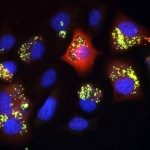Link to Pubmed [PMID] – 20625552
PLoS Negl Trop Dis 2010 Jul;4(7):e731
BACKGROUND: Buruli ulcer, the third mycobacterial disease after tuberculosis and leprosy, is caused by the environmental mycobacterium M. ulcerans. Various modes of transmission have been suspected for this disease, with no general consensus acceptance for any of them up to now. Since laboratory models demonstrated the ability of water bugs to transmit M. ulcerans, a particular attention is focused on the transmission of the bacilli by water bugs as hosts and vectors. However, it is only through detailed knowledge of the biodiversity and ecology of water bugs that the importance of this mode of transmission can be fully assessed. It is the objective of the work here to decipher the role of water bugs in M. ulcerans ecology and transmission, based on large-scale field studies.
METHODOLOGY/PRINCIPAL FINDINGS: The distribution of M. ulcerans-hosting water bugs was monitored on previously unprecedented time and space scales: a total of 7,407 water bugs, belonging to large number of different families, were collected over one year, in Buruli ulcer endemic and non endemic areas in central Cameroon. This study demonstrated the presence of M. ulcerans in insect saliva. In addition, the field results provided a full picture of the ecology of transmission in terms of biodiversity and detailed specification of seasonal and regional dynamics, with large temporal heterogeneity in the insect tissue colonization rate and detection of M. ulcerans only in water bug tissues collected in Buruli ulcer endemic areas.
CONCLUSION/SIGNIFICANCE: The large-scale detection of bacilli in saliva of biting water bugs gives enhanced weight to their role in M. ulcerans transmission. On practical grounds, beyond the ecological interest, the results concerning seasonal and regional dynamics can provide an efficient tool in the hands of sanitary authorities to monitor environmental risks associated with Buruli ulcer.

